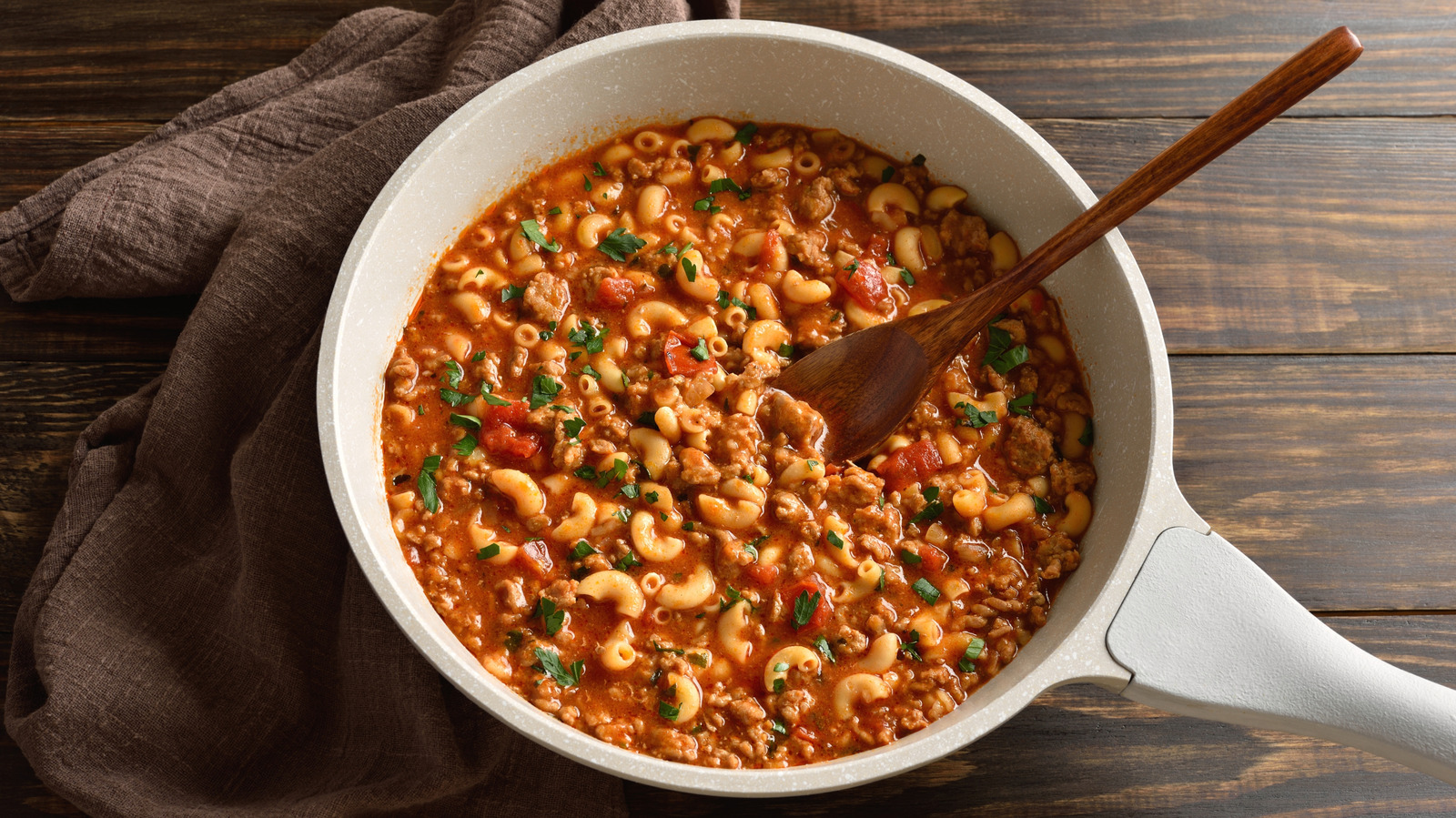Some may know it as American chop suey or chili mac, but in the Midwest, they pay homage to the true origins of the dish: Hungary. Dubbed American goulash, these days the dish is a one-pot pasta dinner typically made with elbow macaroni and ground beef, simmered in a chunky paprika-seasoned tomato sauce. Over in Hungary, goulash is more of a beef stew, also prepared in a tomato sauce but with onion, garlic, and, of course, paprika. The two dishes don’t have much in common nowadays other than Hungary’s signature spice, but the beloved Midwestern stew owes its existence to Hungary.
The country’s trademark dish dates back more than a thousand years, and its traditions are still honored today. The recipe has gradually evolved over the years with dozens of variations all over the globe, but it’s always associated with comfort food and, above all, prized for its affordability. Goulash, or gulyás, arrived in the U.S. sometime in the early 1900s, with the first American recipe printed some time between 1909 and 1914, and it’s all thanks to Hungarian immigrants.
It was lauded for being so adaptable, as home cooks could tweak the recipe based on what was on its way out in the icebox or that week’s sale on beef. Affordability was the top selling point at that time in America, especially in the Midwest. Between the Great Depression and the Dust Bowl, the Midwest was struggling, and American goulash was a comforting salvation. As most nostalgic foods do, American goulash has remained a Midwestern favorite.
American Goulash’s Hungarian legacy
American goulash may seem distinctly American, with its macaroni and simple tomato sauce, but as the name suggests, it’s a re-imagining of Hungary’s famous goulash. It all began in the 9th century, when Magyar shepherds of Hungary needed a hearty meal that was easy to lug through the fields. It needed to be not only filling, but also backpack stable. The herdsman would naturally dehydrate a slow-cooked meaty stew in the blazing sun and then wrap it with sheep stomachs, essentially working as a vacuum-sealed bag. Once mealtime rolled around, the hard workers would take a serving of the stew, add some water, and have themselves a feast.
Gulyás became an emblem of Hungarian comfort food, so naturally, it followed Hungarian immigrants when they started to make their way to America in 1870. By the 1930s, it seemed like recipes for American Goulash were slapped on every paper in the country. The concept was a nourishing stew that wasn’t fussy and could feed a large crowd, which was exactly what households were looking to serve during the Great Depression. The American version of goulash often swapped the larger chunks of meat for ground beef and added pasta to make it even more filling.






